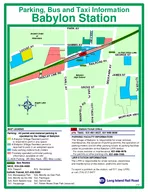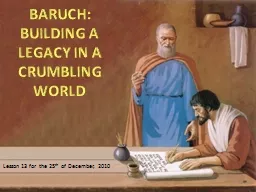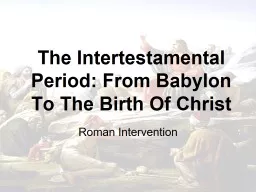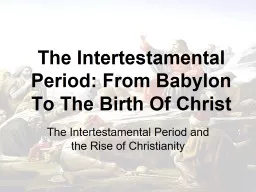PPT-The Intertestamental Period: From Babylon To The Birth Of C
Author : luanne-stotts | Published Date : 2017-10-28
Maccabean Part 1 Intertestamental Period Week Date Topic 1 01 Mar 17 Overview 2 08 Mar 17 Babylonian Period 605539 BC 3 15 Mar 17 Persian Period 539332 BC 4 22 Mar
Presentation Embed Code
Download Presentation
Download Presentation The PPT/PDF document "The Intertestamental Period: From Babylo..." is the property of its rightful owner. Permission is granted to download and print the materials on this website for personal, non-commercial use only, and to display it on your personal computer provided you do not modify the materials and that you retain all copyright notices contained in the materials. By downloading content from our website, you accept the terms of this agreement.
The Intertestamental Period: From Babylon To The Birth Of C: Transcript
Download Rules Of Document
"The Intertestamental Period: From Babylon To The Birth Of C"The content belongs to its owner. You may download and print it for personal use, without modification, and keep all copyright notices. By downloading, you agree to these terms.
Related Documents














